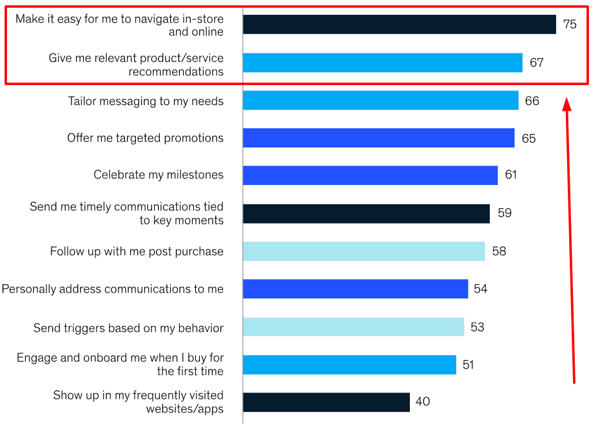Let’s imagine an online shopper named Sarah.
Sarah is a 27-year-old marketing manager with a hefty paycheck who loves online shopping. She eagerly browses the virtual aisles on your e-commerce product search engine, looking for the perfect gift for her friend’s upcoming birthday.
Sarah can’t wait to spend way more than she should on this special gift, and she knows exactly what she wants – a stylish leather tote bag spacious enough to hold all of life’s essentials.
The best part? Your online store sells exactly the stylish leather tote bag Sarah wants.
But here’s the catch: your platform relies only on manual product tagging, reducing and limiting each item’s description to just a few words.
As Sarah types in her keywords, hoping to find that elusive tote bag, she types in the word “sleek.” And just like that, the item isn’t shown in her search, and the sale is lost even though you have that exact bag in your digital inventory.
Both sides lose.
This is the silent but huge struggle faced by countless e-commerce businesses and is often caused by product tagging mistakes. It’s this gap between what online shoppers want and what products are tagged accurately and efficiently to appear in front of your consumers.
And what do consumers want?
As per a recent survey by McKinsley, the two most important things they want are easy site navigation and relevant products in front of them:

Are Your Product Tagging Mistakes Holding You Back?
If a company’s search feature falls short of expectations, the shopper cannot buy what they want, gets disappointed and leaves your site. Recent research by Baymard discovered that the average cart abandonment rate is just under 70%.
This means that too many e-commerce platforms are likely making product tagging mistakes.
This is why online stores must optimize product listings and improve product data management as it is a crucial element in leading customers to what they offer.
When you improve your product tagging strategies, you boost the following:
- Searchability
- Personalization
- Contextualized recommendations and semantic search
- Overall user experience across your online store
This, in turn, reduces cart abandonment, bounce rates, and product returns while significantly enhancing customer engagement and helping you boost conversion rates.
According to a 2023 global survey published by Statista, 70% of business leaders are increasing their investments in personalization and product recommendation, with 80% stating that personalized shopping experiences led to increased consumer spending, and 62% reported a positive impact on customer retention.
The recent McKinsey research shows that 71% of consumers expect online shops to deliver personalized interactions, with 76% getting frustrated when they don’t get the products they expect in their feed.

However, many online retailers still underestimate the importance of product optimization, conversion rate optimization, and ecommerce SEO in sales.
5 Common Product Tagging Mistakes Killing Your Conversions
Avoiding the most common product tagging mistakes is essential for boosting visibility and can help you boost conversion rates quickly. These issues often include:
- Inaccurate or incomplete tags
- Overloading tags with keywords
- Ignoring long-tail keywords
- Inconsistent tagging and product data management strategies
- Neglecting competitor analysis
Solving these common e-commerce issues will vastly enhance the online shopping experience for your visitors, promoting engagement, improving conversion rate optimization, and driving more sales.
Mistake #1: Inaccurate or Incomplete Tags
Accuracy and consistency are key.
Product tags must match products perfectly. Include all important details and update tags when necessary. Consider customer search terms for better visibility. Consistent, organized tags benefit both customers and businesses, leading to increased sales.
Mistake #2: Over-Stuffing Keywords
It’s important to tag products correctly, but a common mistake is using too many keywords, known as keyword stuffing. This makes your message unclear and can frustrate people searching for specific items.
Smart keyword use helps customers find what they need easily, making shopping more enjoyable and pleasing search engines like Google. So, remember, using keywords wisely is crucial for quick and easy searches.
Mistake #3: Neglecting Long-Tail Keywords
Neglecting long-tail keywords in online product catalogs is a common mistake that enables you to boost conversion rates. Here’s why they matter:
- They improve product visibility online.
- They target specific customer groups.
- They tailor descriptions to match shopper needs.
- They increase the chances of appearing in relevant searches.
- They enhance product discoverability in your catalog.
Incorporating these keywords goes beyond broadening reach; it connects you with ready-to-buy customers. Consider how you search online – likely for something specific. Long-tail keywords match these searches, guiding potential buyers to your products.
Mistake #4: Inconsistent Tagging Practices
Inconsistent product tags can disrupt your conversion rate optimization and deter potential customers. To ensure a smooth shopping experience, unify your tagging system. Here’s how:
- Establish consistent tagging rules and a solid product data management plan.
- Train your team on proper tagging methods to better optimize product listings.
- Utilize AI tools for improving product data quality, tagging and organization.
- Streamline tag updates with efficient software.
Mistake #5: Ignoring Competitor Analysis
To boost your online store’s success, it’s crucial to check out what your competitors are doing with their product tags. This isn’t about copying them, but rather learning from their strategies.
Here’s why it matters:
- Using specific keywords makes your products easier to find.
- Consistent tagging improves visibility.
- Stay updated with trends to keep your tags relevant.
- Adapt good tag strategies from competitors to your store.
Understanding your market better will help you make your store more appealing and visible. It’s like having a chat with the market – learning, adapting, and staying relevant.
How to Fix Your Product Tagging Mistakes
To boost your product optimization, improve ecommerce SEO, and beat tagging issues, you must do the following steps:
- Tackle your product data management task of performing a detailed product tagging audit.
- Find relevant keywords.
- Implement clear and consistent product data management practices.
- Use AI-powered e-commerce search tools.
These practices will also help you with conversion rate optimization and track your progress on sales and customer satisfaction.

Step 1: Conduct a Product Tagging Audit
Regularly reviewing and updating your online store’s product tags is essential for a user-friendly site and easy shopping.
Why it matters? It keeps tags fresh and relevant and identifies and fixes tagging issues.
Tips for better tagging:
- Use appropriate keywords.
- Organize tags logically.
- Use the advantages of AI-powered tagging to speed up and automate tagging to save time and resources.
- Monitor and regularly assess tagging performance.
- Use consumer insights to refine product data management strategy and optimize product listings.
Step 2: Research Relevant Keywords
Using the right keywords is crucial for online visibility and customer satisfaction. Here’s how:
- Find popular keywords using SEO tools like Ahrefs or Semrush to improve Google Search rankings.
- Include keywords in your product tags to improve tag accuracy and search visibility.
- Add keywords strategically to optimize product listings and reach the right audience.
- Utilize tools to simplify keyword selection for optimal tag effectiveness.
Step 3: Implement Clear and Consistent Tagging Practices
Making your product tags clear and consistent is vital to improving your online store. It helps customers find what they’re looking for and makes them happier with their shopping experience. Here’s how to get your product tagging right:
- Improve product tags by creating a set way to do tagging.
- Check your tags regularly to make sure they’re accurate.
- Use AI-powered tagging to reduce human errors, speed up the process, and make it easily scalable as your platform grows.
Step 4: Leverage AI-Powered Tagging Tools
Manual product tagging, especially for large online stores, is often unrealistic and sometimes even impossible to implement given the volume of products, the increasing number of categories, brands, and other time-consuming factors.
Using AI to tag products in your online store can change how you manage your product listings, making the process faster and more precise.
By choosing AI for tagging, you get a system that works quicker and with fewer mistakes compared to doing it by hand. AI-powered tagging is like having a smart assistant who can read your mind, never gets tired, does things quickly, and rarely makes mistakes.
This gives you more time to think about how to make your business better instead of getting stuck in the details of listing products.
Unlock Your Full E-Commerce Potential with Miros.ai
In a world where every missed opportunity represents lost revenue, the need for a solution arises. But where there’s a problem, there’s room for innovation.
Meet Miros.ai, the AI-powered e-commerce tool that is reshaping online shopping.
Unlike conventional methods relying on product metadata and tags, Miros utilizes advanced visual AI for wordless search. Accurately interpreting images automatically assigns numerous tags to products, enabling shoppers to quickly find the items they want with any search term.
This intuitive approach not only enhances the shopping experience but also drives sales.
Here’s an example of how Miros.ai helps e-commerce platforms improve their e-commerce product search engine accuracy and speed of product discovery:
This visual search tool acts as an AI-powered e-commerce product search engine. It minimizes product tagging mistakes and allows your visitors to have an improved and more enjoyable shopping journey with minimized text search attempts.
It removes the hassle of manual product optimization and tagging and eliminates the need for website cookies while boosting your KPIs and increasing revenue.
Want to help your e-commerce and learn more about Miros? Book a quick demo here.




